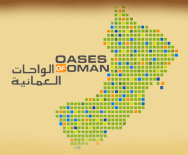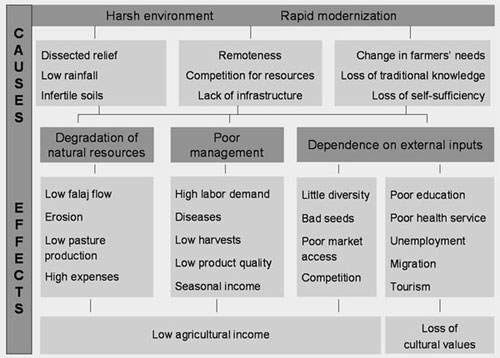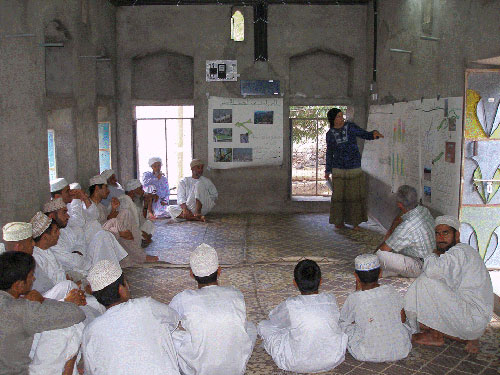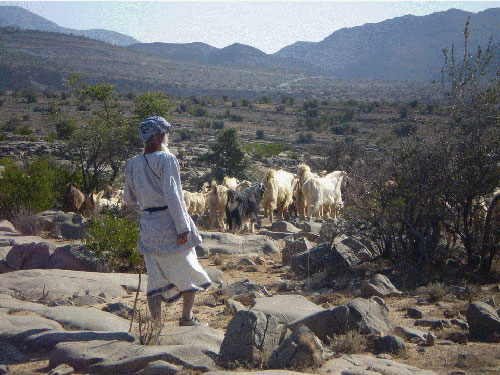 |
| Archaeology |
| History |
| Urban Planning |
| Agriculture |
| Landscape Ecology |
 |
Oasis Agriculture at Jabal al Akhdar Objectives: Description of the land use techniques in agriculture, investigation of the social and economic aspects of crop and livestock agriculture, calculation of nutrient balances (vertical and horizontal matter fluxes). Contact Person: Prof. Dr. Andreas Bürkert and Prof. Dr. Eva Schlecht, Institute of Crop Science, University of Kassel, Germany Email: tropcrops@uni-kassel.de OR tropanimals@uni-kassel.de Scientific staff: Dr. Uta Dickhoefer, Dr. Maher Nagieb Study area: Jabal al Akhdar Duration: 2006-2009 Framework: key problems and farmers' objectives The Sultanate of Oman has undergone rapid social and economic changes in the last four decades, which strongly influenced the country's traditional agriculture, farmers’ objectives, needs and obligations. To explore the contemporary problems perceived by farmers in villages of Al Jabal al Akhdar and their attitudes towards agricultural developments in the future, qualitative interviews were conducted with men and women involved in agriculture. The answers were grouped and hierarchically structured to identify the key problems, their causes and effects, which subsequently were used to formulate the main development goals. The lack of irrigation water or of fodder on pasture, the labor- and cost-intensity of farming activities as well as plant and animal diseases were frequently mentioned constraints related to agriculture, whereas a poor health and education service, unemployment, migration, the increasing tourism or the loss of cultural values were social problems perceived by farmers (Figure 1). They are the result of a degradation of the natural resources, a poor agricultural management and the strong reliance of people on external inputs, which developed within the frame of the rapid modernization on Al Jabal al Akhdar. However, farmers still acknowledge agriculture as a source of income, meat, fruits and vegetables and as an important part of their cultural heritage. To meet the current and future needs of the rural population on Al Jabal al Akhdar, alternative land use strategies and management options are therefore sought to assure a sustainable resource use, the efficient allocation of labor, finances and technology and to render farmers less dependent on the external infrastructure.
Social and economic aspects of the traditional oasis agriculture To quantify the contribution of crop and livestock husbandry to household income, a socio-economic survey in three villages on Al Jabal al Akhdar was conducted. Information regarding the land and livestock endowment and the importance of non-farm activities for the overall household income was collected during semi-quantitative household interviews and was used to distinguish different household types. Moreover, goats of selected livestock keepers were weighed monthly to determine animals’ daily bodyweight gain, whereas current off-take rates of goat herds were estimated based on data collected during progeny history interviews. Four household types were differentiated. While group A (n=8) comprised farmers, which cultivated relatively large gardens (= crop farmers), households of group B (n=9) owned large goat herds (= livestock keepers). Households of group C (n=8) were characterized by a high non-farm income, whereas group D (n=15) included families with little non-farm income, only owning a few animals and cultivating small areas. Pomegranates, walnuts, garlic and the locally produced rose water as well as live goats are sold on the lowland markets and to local tourists and prices for these products are high. However, preliminary growth and reproduction rates, the occurrence of diseases and the high labor demand indicate that productivity of the traditional goat and crop husbandry is low. Hence, to identify the main factors limiting the productivity of the traditional oasis agriculture and to simulate the effects of an improved management on the productivity of the crop and goat husbandry, simple modeling tools will be applied.
The role of pasture management and an adjusted feeding of goats for sustainable livestock production To evaluate the nutritional status of animals and to determine feed intake of goats on pasture in response to different rations offered at the homestead, two feeding trials were carried out on Al Jabal al Akhdar. Moreover, the natural vegetation at grazed and ungrazed sites as well as current grazing practices of farmers were studied to quantify biomass yields, energy and nutrient concentrations of the fodder species and to evaluate potential improvements in the pasture and feeding management.
Although herbaceous biomass on mountain pastures was low and decreased during dry periods, foliar biomass reached 41 t DM per hectare on the mountain slopes and in the shallow valleys, indicating the high natural carrying capacity of the rangelands. However, while grazing areas of the different villages were clearly defined in the past, village pastures overlap nowadays, fewer animals are herded and road and housing construction has decreased the area available for livestock grazing. Thus, stocking densities are very high in the vicinity of settlements (Figure 2) and the continuous exploitation by goats, sheep and donkeys has severely decreased the fodder quantity available on pasture. Together with the low nutritional quality of the pasture vegetation, it appears to limit growth and production of goats. The feeding of green fodder significantly reduced goats’ feed intake during grazing. An improved pasture management incorporating farmers’ traditional grazing practices and the supplementation of goats with locally available feedstuffs can therefore improve livestock nutrition and assure the sustainable use of the natural fodder resources in the future.
Publications
|
|||||||||||||||||||||||||||||||||



